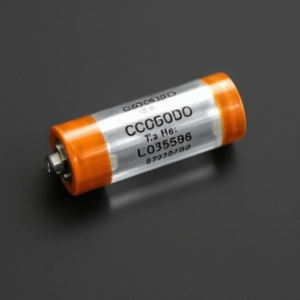1. What is a Capacitor?
A capacitor is a tiny electronic component that stores electrical energy, sort of like a battery but in a different way. You can think of it as a storage tank for electricity.

2. How Does a Capacitor Work?
At its core, a capacitor consists of two metal plates separated by an insulating material called a dielectric. This setup is the key to how capacitors store energy.
- When an electric voltage (or current) is applied across the plates, the capacitor starts storing energy in the form of an electric field between the plates.
- Positive charge builds up on one plate, and negative charge builds up on the other plate. The insulating material between the plates prevents the charges from touching each other, but the energy remains stored in the capacitor.
Once the capacitor is charged, it holds the energy until it’s needed.
3. How is Energy Stored in a Capacitor?
- The electric field created between the plates holds the energy.
- The amount of energy stored depends on the size of the plates, the distance between them, and the material between the plates.
- Capacitors can store energy very quickly and discharge it just as quickly when needed.
4. What Happens When You Disconnect the Capacitor?
Once you disconnect the capacitor from the power source, it keeps the energy stored for a while. But eventually, it will discharge (release the stored energy) back into the circuit. Some capacitors discharge quickly, while others can hold their charge for a longer time.
5. Types of Capacitors:
There are different types of capacitors, each suited for different purposes. Here are a few examples:
- Ceramic Capacitors: Small and commonly used in electronic circuits.
- Electrolytic Capacitors: Larger capacitors used in power supplies and audio equipment.
- Tantalum Capacitors: Known for stability and reliability, used in precision circuits.
- Supercapacitors: Capacitors that can store a large amount of energy, used in applications that need quick bursts of power.
6. Applications of Capacitors:
Capacitors are used in many different devices and systems. Here are some common applications:
a. Power Supply Smoothing:
- In power supplies, capacitors help to smooth out the electricity. When AC (alternating current) is converted to DC (direct current) in power supplies, capacitors filter out any unwanted fluctuations or “ripples,” making the power more stable for devices.
b. Energy Storage:
- Capacitors store energy in devices like camera flashes or uninterruptible power supplies (UPS). When you press the button to take a photo, the flash capacitor releases its stored energy in a burst, producing a bright flash.
c. Signal Filtering and Noise Reduction:
- Capacitors are used to filter out noise in electronic signals. In audio systems, for example, capacitors can remove unwanted high-frequency noise to ensure the sound is clear and crisp.
d. Timing Circuits:
- Capacitors are also used in circuits that need to measure time or create specific delays. For example, they can control the timing in clocks, oscillators, or even blinking lights. When a capacitor charges or discharges at a specific rate, it can control the timing of an event.
e. Energy Boost in Electronic Devices:
- In certain devices, capacitors are used to provide quick bursts of energy. For instance, in radio transmitters or microprocessors, capacitors help supply a rapid surge of power when needed.
f. Motor Start and Run Capacitors:
- In electric motors, capacitors help the motor start (by giving it an initial boost) and keep it running smoothly. For example, in refrigerators and air conditioners, capacitors help the motor work efficiently.
g. Coupling and Decoupling Signals:
- In some circuits, capacitors are used to couple (connect) different parts of the circuit or decouple (isolate) signals. They allow AC signals to pass through while blocking DC signals. This helps in things like amplifiers, where the capacitor ensures the audio signal is correctly passed through the circuit.
7. Why are Capacitors Important?
- Quick Energy Storage and Release: Capacitors can store and release energy much faster than batteries, which makes them useful for tasks that require rapid bursts of energy, like camera flashes or power surges in motors.
- Smoothing Power: They help stabilize power supplies by smoothing out voltage fluctuations and providing steady power to sensitive devices.
- Filter and Improve Signals: Capacitors clean up signals by removing noise and unwanted frequencies, which is crucial for clear audio or stable signals in electronics.
8. Summary:
- A capacitor is an electronic component that stores electrical energy and releases it when needed.
- It has two metal plates separated by an insulating material (dielectric), and when voltage is applied, it stores energy in an electric field.
- Capacitors are used in many devices to smooth power, store energy, filter signals, and provide quick bursts of energy.
- They are found in things like power supplies, audio equipment, timing circuits, motors, and even camera flashes.
In simple terms, capacitors help store and manage electrical energy in many devices, making them essential for stable and efficient functioning of modern electronics.
Tags: AC signal passing, AC to DC conversion, audio signal clarity, camera flash capacitor, capacitor, capacitor applications, ceramic capacitor, charge storage, coupling capacitor, DC blocking, decoupling capacitor, delay circuits, Dielectric, Electric Field, electrical energy storage, electrolytic capacitor, electronic circuits, electronic component, electronic devices, energy boost, energy burst, energy discharge, energy management, energy storage, metal plates, motor run capacitor, motor start capacitor, Noise reduction, oscillators, power supply smoothing, power surge, rapid energy release, ripple filtering, Signal filtering, supercapacitor, tantalum capacitor, timing circuits, voltage, voltage stabilization


